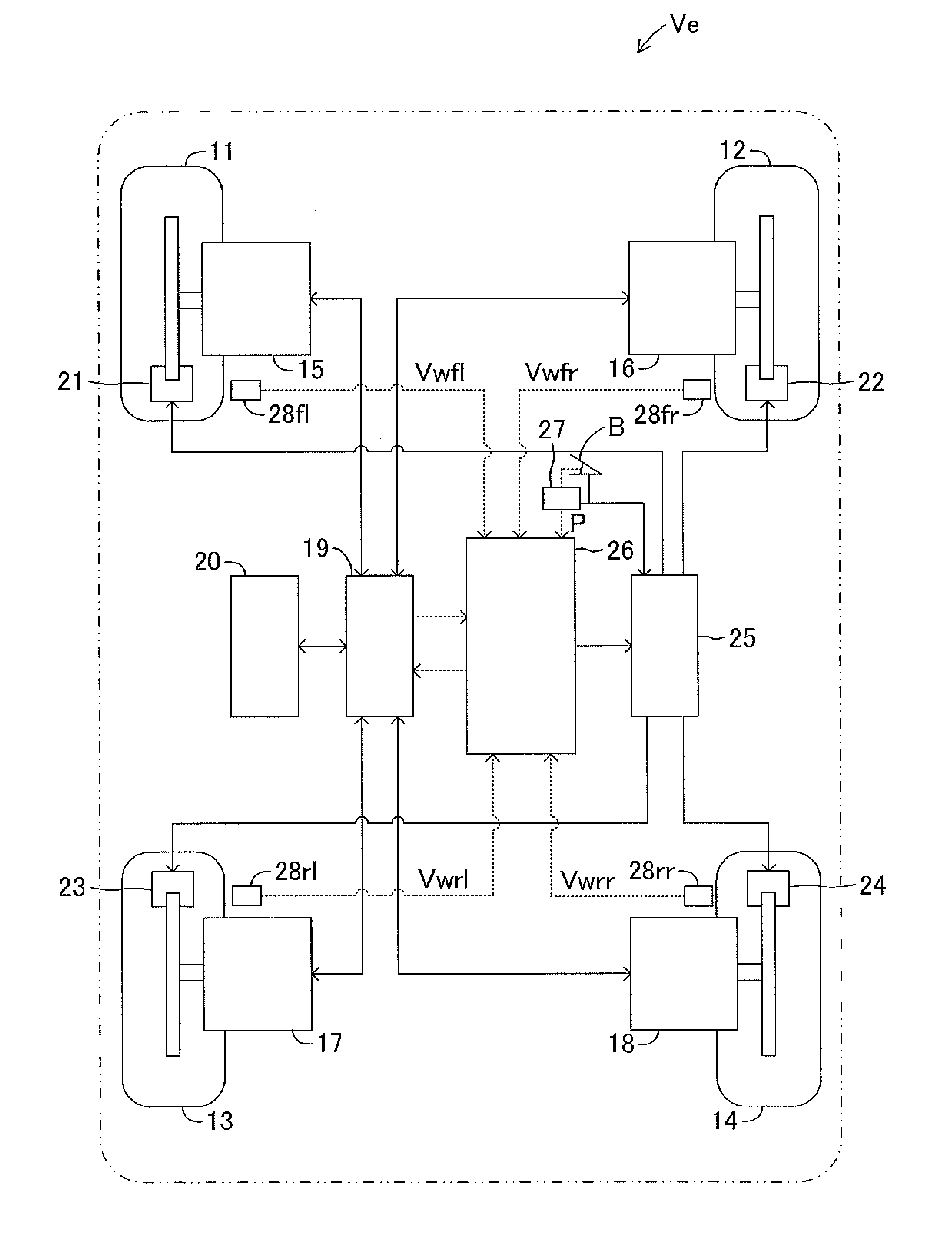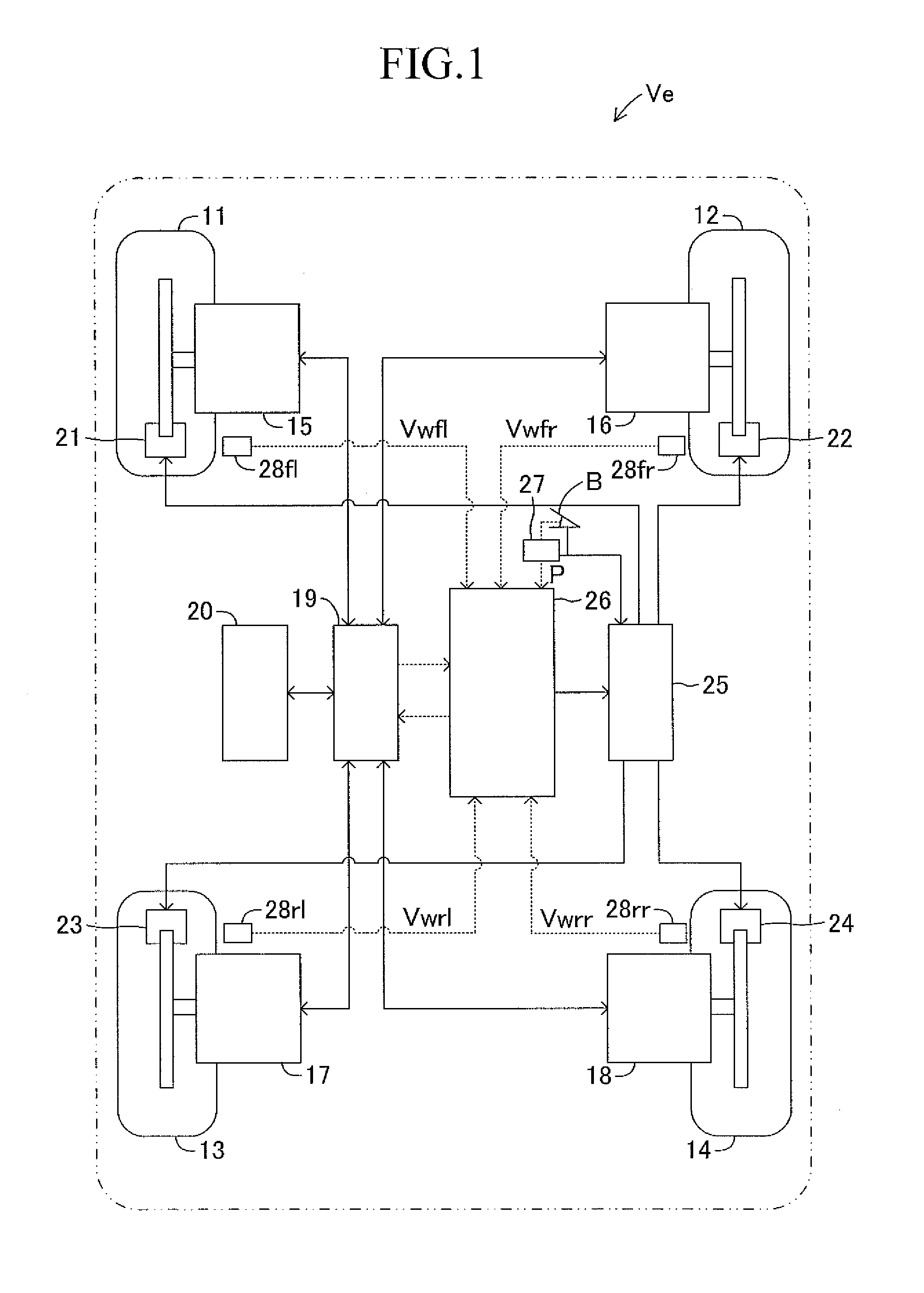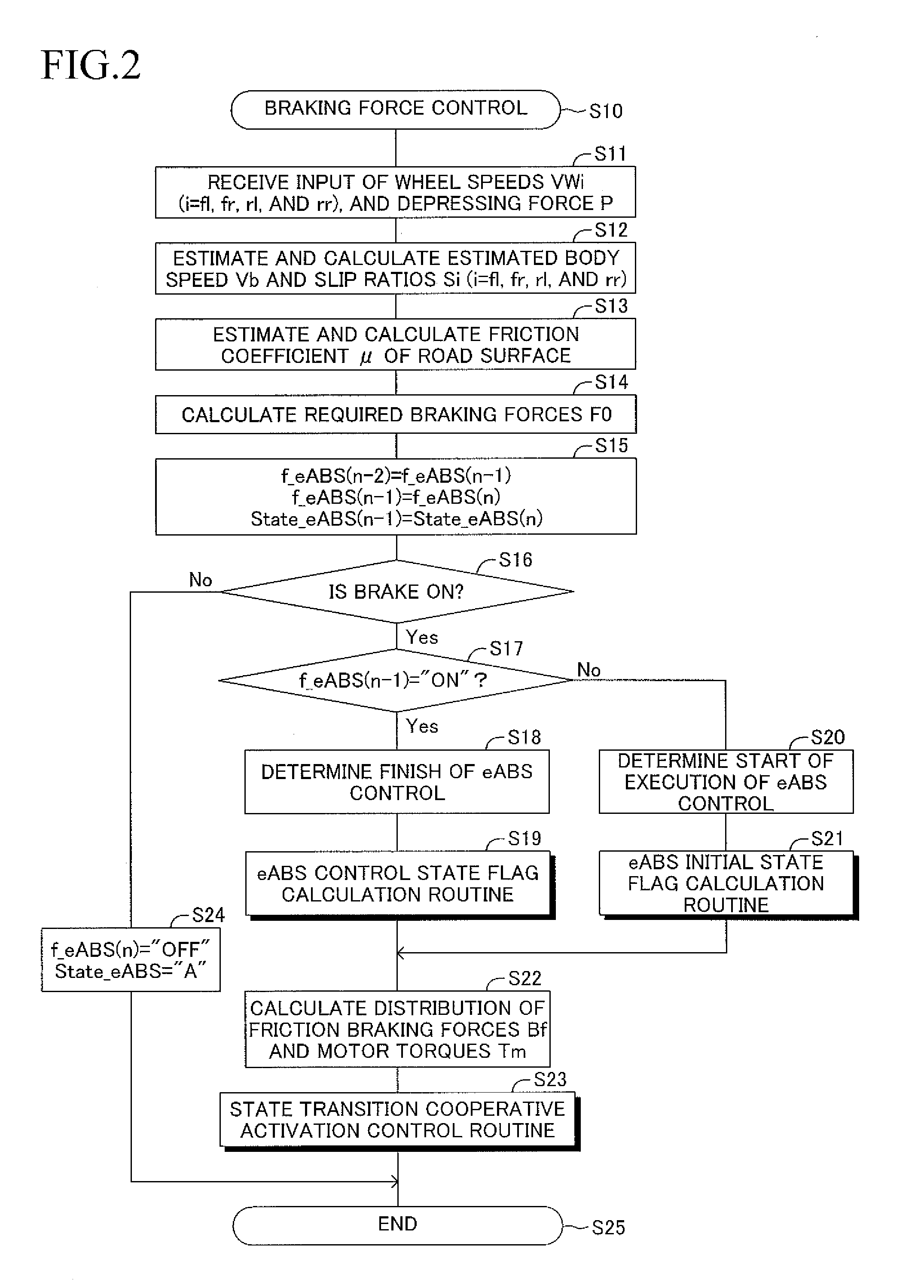Braking force control apparatus for vehicle
a technology for controlling apparatus and braking force, which is applied in the direction of braking components, process and machine control, electric devices, etc. it can solve the problems of time lag in terms of control, inability to provide appropriate control properties, and usually set backlash in power transmission systems, etc., to prevent backlash, improve control efficiency, and improve control efficiency
- Summary
- Abstract
- Description
- Claims
- Application Information
AI Technical Summary
Benefits of technology
Problems solved by technology
Method used
Image
Examples
second embodiment
b. Second Embodiment
[0190]The first embodiment is realized in a manner that the magnitudes of the required braking forces F0 (ideal braking forces μW) are determined by executing the braking control program, and the magnitudes (distribution) of the friction braking forces Bf and the magnitudes (distribution) of the motor braking torques Tmr or the motor driving torques Tmc are determined depending on the eABS control state (state A or state B) in order to impart the determined required braking forces F0 (ideal braking forces μW) to the vehicle Ve. In this case, appropriate determination of the magnitudes of the required braking forces F0 (ideal braking forces μW) may become difficult depending on the traveling state (traveling environment) of the vehicle Ve and the like. Thus, according to a second embodiment of the present invention, the electronic control unit 26 executes the state transition cooperative activation control routine illustrated in FIG. 16, thereby appropriately carr...
third embodiment
c. Third Embodiment
[0203]The first embodiment, the variation thereof, and the second embodiment are realized in a manner that the electronic control unit 26 executes the eABS control state flag calculation routine to cause the eABS control state to transition from the state A to the state B, for example, when the friction coefficient μ of the road surface decreases below the predetermined road surface friction coefficient μ0 on an extremely-low-μ road. In other words, the first and second embodiments are realized in a manner that the eABS control state is caused to transition depending on an environment (more specifically, the road surface state and the like) in which the vehicle Ve is traveling.
[0204]By the way, as described in the first embodiment, the variation thereof, and the second embodiment, the driver is effectively prevented from feeling the sense of discomfort and sensing the noise caused by the transition of the eABS control state by maintaining, in one direction, the ch...
PUM
 Login to View More
Login to View More Abstract
Description
Claims
Application Information
 Login to View More
Login to View More - R&D
- Intellectual Property
- Life Sciences
- Materials
- Tech Scout
- Unparalleled Data Quality
- Higher Quality Content
- 60% Fewer Hallucinations
Browse by: Latest US Patents, China's latest patents, Technical Efficacy Thesaurus, Application Domain, Technology Topic, Popular Technical Reports.
© 2025 PatSnap. All rights reserved.Legal|Privacy policy|Modern Slavery Act Transparency Statement|Sitemap|About US| Contact US: help@patsnap.com



